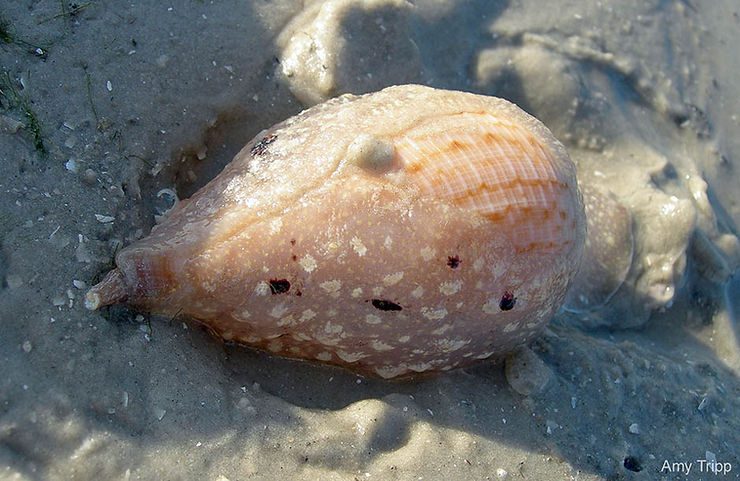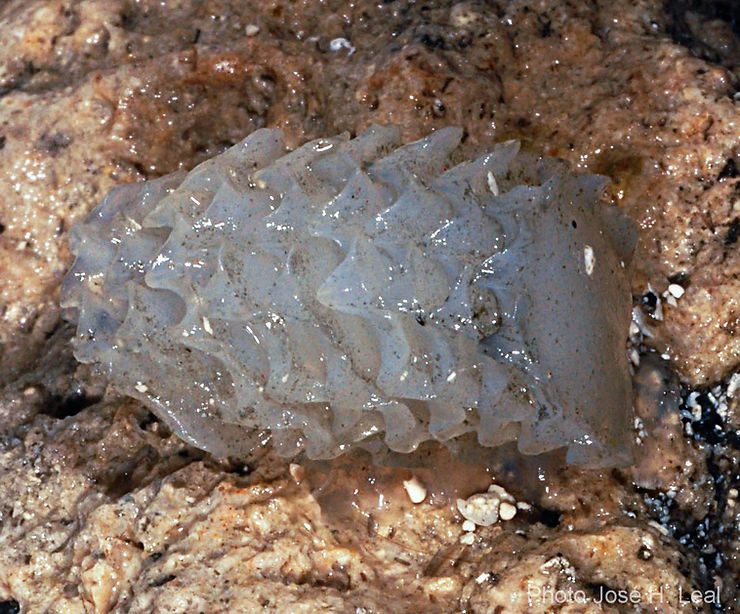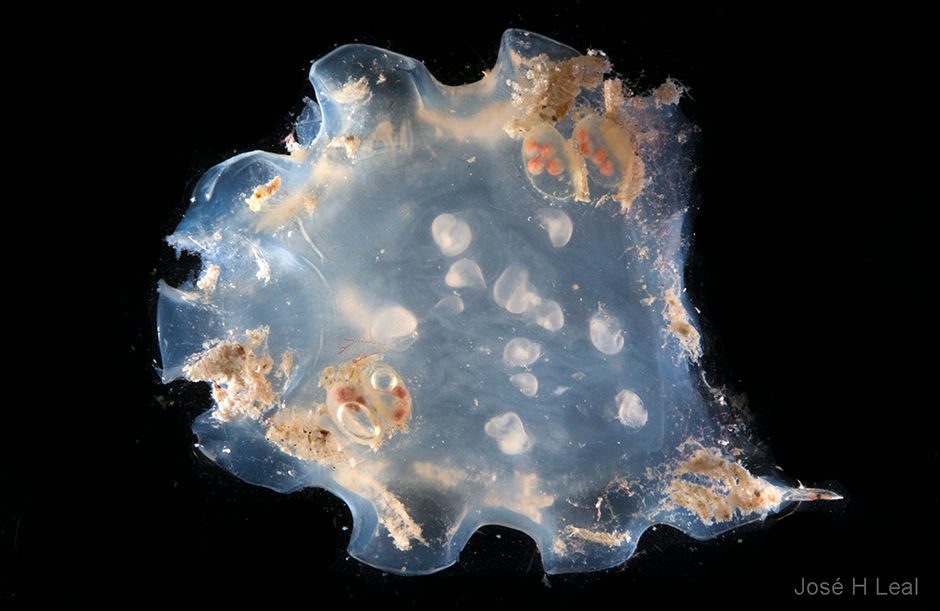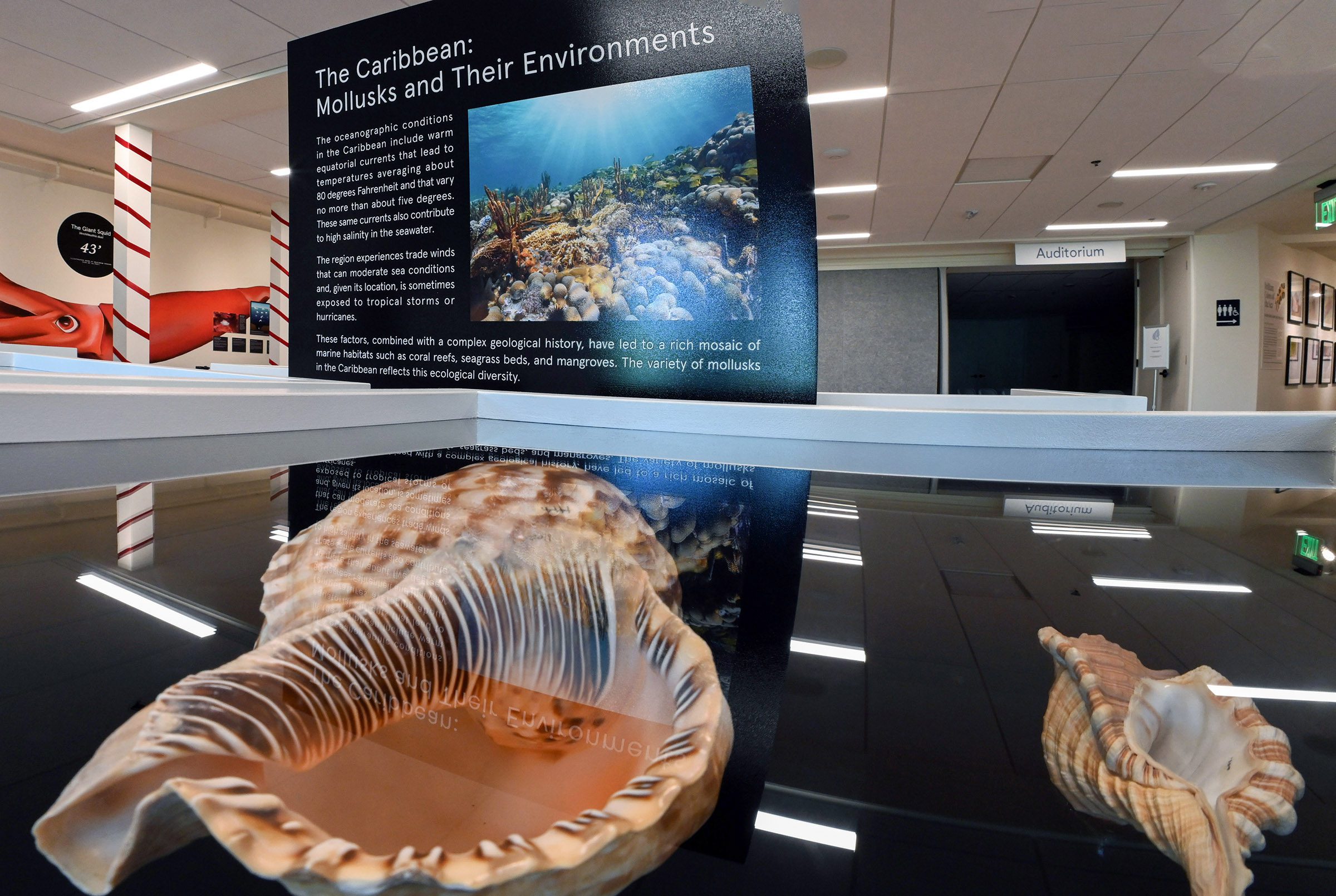The Atlantic Fig Snail, Ficus papyratia (Say, 1822), makes a thin shell that is shaped like a slender fig or pear. The shell opening, or aperture, tapers gently toward the end of the anterior canal. The shell color is pinkish-gray to light-tan, and is sculptured with a delicate net-like pattern. The animal is cream-colored with dark and whitish spots.

The photo of the live fig snail above was taken in 2015 on Kice Island, Collier County, Florida, by Amy Tripp. The snail’s mantle covers almost completely the shell, and its siphon can be seen on the right. The mantle (and siphon) will withdrawal into the shell at the slightest sign of danger. The continual, repeated expansion and withdrawal of the mantle folds over the shell works to keep it free of plant and animal encrustations.

I took the two photos of the Atlantic Fig egg capsules (top and bottom) in the Museum live tanks cared for by Rebecca Mensch. The flattened, milky-white, translucent capsules have fluted edges, and are about the size of a nickel (a little less than an inch). They are laid in succession, stacked on top of one another, and are attached to a rock or other hard structures. The detail photo (below) shows one single egg capsule containing about a dozen individuals already at the early larval stage. (To boot, egg capsules of the Mauve-mouth Drill, Calotrophon ostrearum, with pink-red larvae inside, are visible on the surface of that Atlantic Fig capsule.) Curious about the natural history and biology of local mollusks? Read more about the subjects in the Southwest Florida Shells Guide and in this Blog.

#atlanticfigsnail #ficuspapyratia #ficuscommunis #ficidae # eggcapsules #larva #mantle #siphon #anteriorcanal #aperture #mauvemouthdrill #calotrophonostrearum


